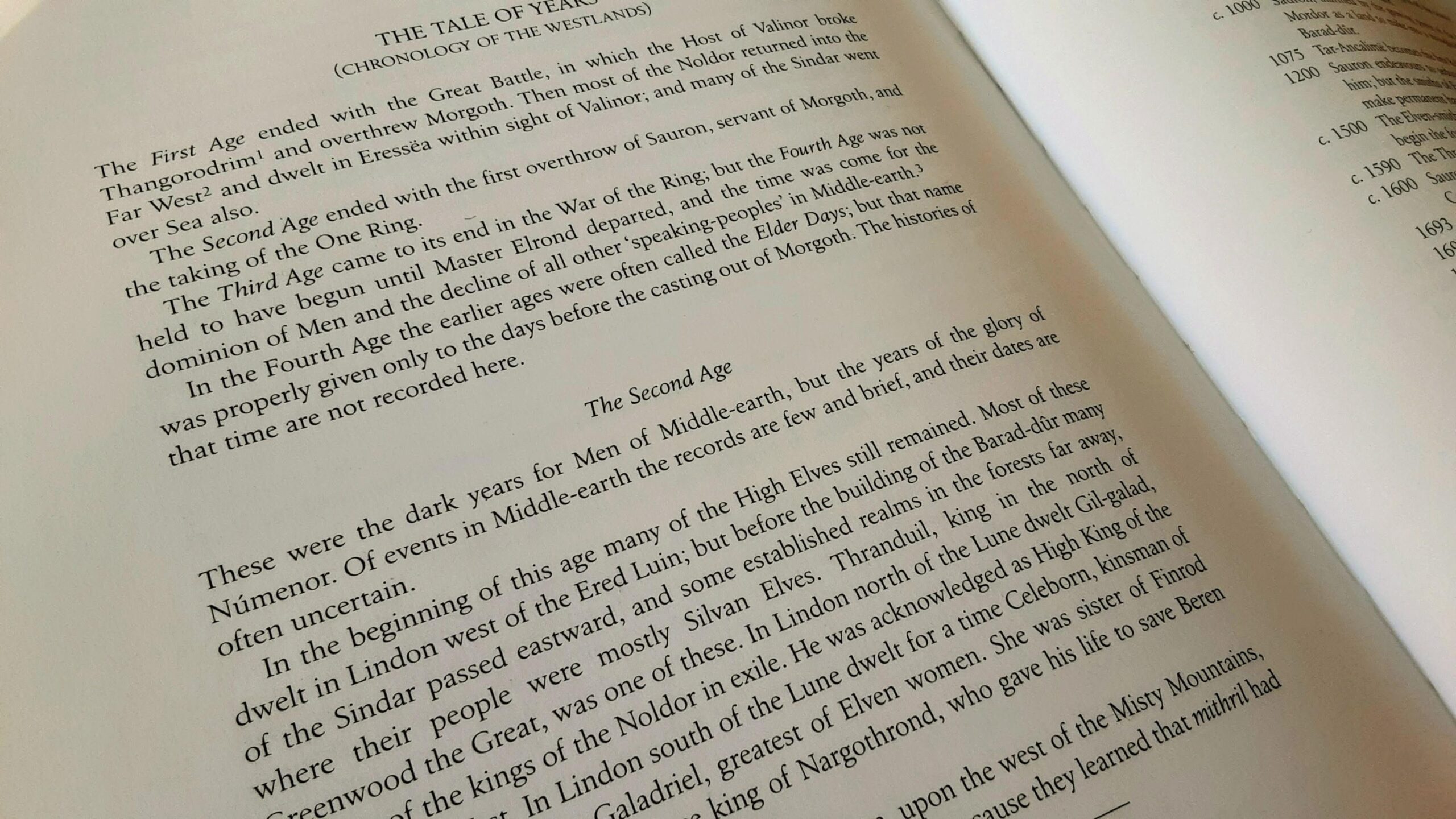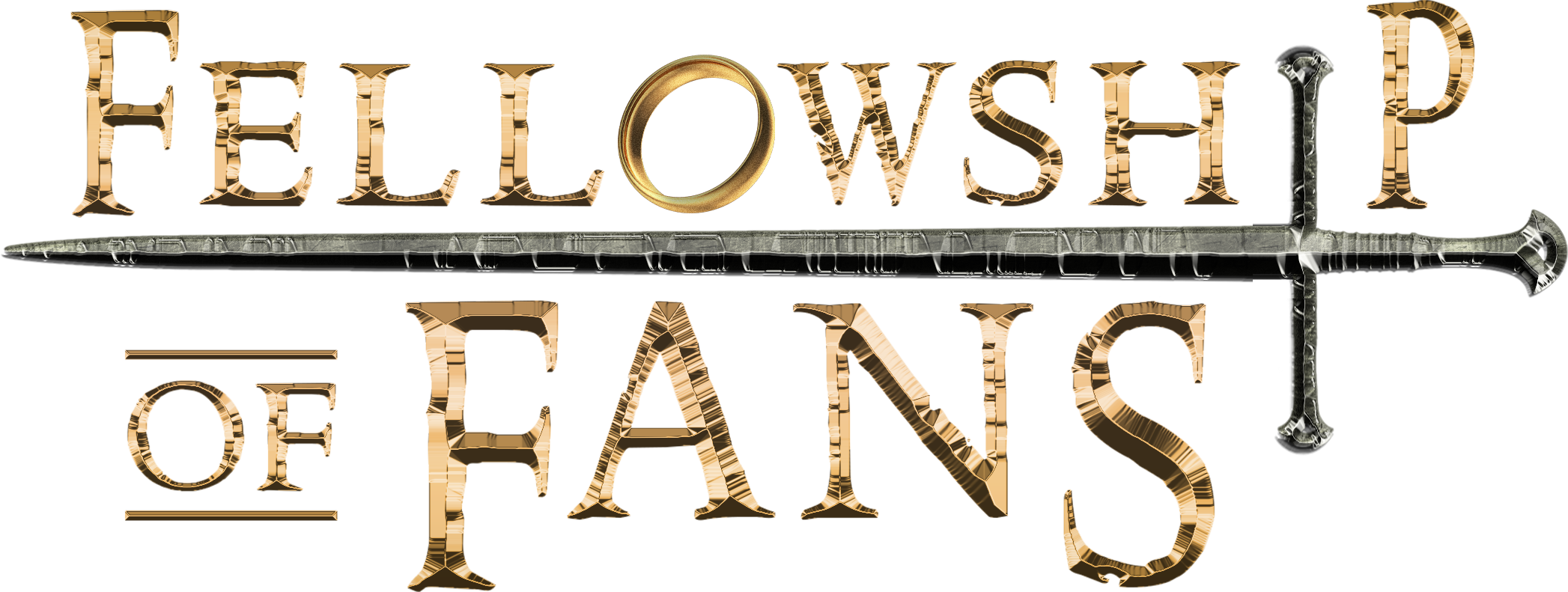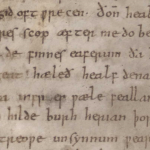
How Will Rings of Power’s Season 3 Time Jump Impact the War of the Elves and Sauron?
Has there ever been a season of a show that was more certain before it was confirmed than “The Rings of Power” Season 3? Seriously, our team at Fellowship of Fans was talking about showrunners JD Payne and Patrick McKay (AKA ‘McPayne’) doing preliminary work on Season 3 over a year ago.
Still, it was welcome news when Prime Video finally confirmed in mid-February that Season 3 was official and production was underway. Along with the basic announcement, The Hollywood Reporter broke the news with the additional tidbit that the new season would be “jumping forward several years from the events of season 2” and that it would take place “at the height of the War of the Elves and Sauron, as the Dark Lord seeks to craft the One Ring that will give him the edge he needs to win the war and conquer all Middle-earth at last.”
While it’s fun to see the Second Age story finally moving along, the time factor is a bit of a curveball. Sure, it’s nice to see that we’ll actually be skipping along a bit faster, Silmarillion style (albeit by years and not centuries). A time jump is welcome in that sense.
But does the move actually help line the story up with the source material any better? One of The Rings of Power’s biggest struggles has been managing time. (We all knew it would be with this kind of multi-millennium adaptation.) Does the new time jump actually help or hinder the time issue for the season ahead?
Let’s break down what a multi-year time jump, combined with the forging of the One Ring, looks like according to the source material and then compare it to what we’ve seen so far, along with what we could see ahead in Season 3.
The Tolkien Timeline
Let’s start with the original timeline Tolkien laid out for this critical central point in the Second Age. Here are the main beats taken from the Appendices of The Return of the King (with the years listed being that far into the Second Age):
- 1500: The 16 Rings of Power are forged.
- 1590: The Three Rings are forged.
- 1600: The One Ring is forged, Barad-dûr is completed.
- 1693: The War of the Elves and Sauron begins.
- 1695-97: Sauron invades Eriador and sacks Eregion.
- 1699: Sauron overruns Eriador.
- 1700: Númenóreans defeat Sauron.
- 1701: Sauron flees to Mordor.
I’ll link to the Tolkien Gateway timeline if you want to see the nitty-gritty details of everything else happening during this time. For now, though, this gives us a good refresher on the order in which the War of the Elves and Sauron plays out.
The Rings of Power Timeline
Connecting the dots in The Rings of Power chronology is both harder and easier than those from the source material. On the one hand, Tolkien’s original story is vast and complex. On the other hand, he gives us easy dates to go by.
In the case of McPayne’s show, the bulk of the Second Age has been compressed into a single point or progression in time. That means you kind of have to assume that the bulk of the time, everything is concurrent or, at the least, occurring within a relatively close time frame as it plays out. That said, here are the major events, thus far, as they compare to the previous list:
- Season 1 finale: The Three Rings are forged.
- Season 2 mid-season: The Seven Rings are forged.
- Season 2 late-season: The Nine Rings are forged, Adar’s siege of Eregion begins, Sauron assumes control of Adar’s forces and sacks Eregion.
That’s right about where we’re at as the Season 2 credits roll.
Comparing the Timelines Heading Into Season 3
Noticeably missing from The Rings of Power Season 2 is the forging of the One Ring—something that we now know is coming in Season 3. We also know, thanks to the recent announcement, that Season 3 will show the War of the Elves and Sauron in full swing.
Working from Tolkien’s timeline, the War of the Elves and Sauron lasts for roughly seven years before he is defeated by the Númenóreans. In its second year, he invades Eriador. In the fourth, he sacks Eregion. By the sixth year, he has overrun Eriador, and in the seventh year, he is overthrown by the not-yet-Tar Minastir.
If we try to apply this sequence to the show, the war has already begun, and the sack of Eregion is already over. Ironically, this means we should only be three years away from Sauron’s defeat by Minastir. I don’t know about you guys, but while several can technically mean three, it usually means more than that. Wouldn’t it be ironic if, after condensing and skipping over so much time, the story actually jumped too far ahead?
That said, we’re likely talking about a matter of a year or two difference in the two timelines here—which is negligible. What really matters is that the War of the Elves and Sauron drags out for the better part of a decade, Trojan War style. If the show jumps ahead several years, we should be able to appreciate the feel of a genuine knock-down, drag-out war like the Greek epic we all know and love rather than something that takes place in a matter of days or weeks, like what we’ve had so far.
If I had to guess, I bet the season will end right around the events in SA 1701 as Tolkien described them, with Sauron defeated, the war over, and the world seemingly put to rights again. (The perfect faux-victory point for the middle of a five-season story, right?)
Other Factors to Consider
The biggest wild card here is the One Ring. The announcement implies that the trinket to rule them all still won’t exist when the next season starts. Rather than precipitating Sauron’s war with the Elves, the One Ring still won’t even be a factor in it—at least not until much later. Its mid-war or even post-war forging could create an unpredictable twist no one counted on.
Who knows. With Ar-Pharazôn on the throne in the condensed timeline, maybe we’ll even get a version where Sauron forges the One Ring, nearly completes his defeat of the Elves, and then is in his turn defeated not by Minastir’s forces, but by Pharazôn’s. Sauron could then take off his Ring and surrender (rather than retreat to regroup in Mordor) and be whisked off to Númenor for an Akallabêth-tic Season 4.
That’s just conjecture, of course. I’m trying to imagine how McPayne will draw forward the later events of the Second Age the same way they’ve wrapped up the earlier centuries into a single story. At this point, though, we only really know that the One Ring isn’t the driving force behind the War of the Elves and Sauron, even though it will factor into the equation at some point.
What About the Dwarves?
The other thing to consider is the Dwarves. In the source material, they pop up to attack Sauron during the sack of and retreat from Eregion. After he drives them back to Khazad-dûm, Unfinished Tales says, “Ever afterwards Moria had Sauron’s hate, and all Orcs were commanded to harry Dwarves whenever they might.” That’s about it from the Stunted People [Ed: rude!], that is, until a relative handful of them show up for the War of the Last Alliance, half an age later.
In the show, the Dwarves arrived at Eregion, helping Elrond and Company escape. Season 2 ended with the death of Durin III and the ascendency of Durin IV—but it was made clear that Durin’s non-canonical brother was going to cause some succession trouble.
My guess here is that we’re going to see the Dwarves become a cut-off side plot in the show for a while. They’ll sort out who is supposed to be in charge, and eventually, they’ll get back into the mix during the build-up to the final fight with Sauron.
A couple of interesting things here, though. First, the introduction of other Dwarven houses will make it easier for both good and bad Dwarves to fight in the War of the Last Alliance (where they are described as being on both sides of the fight, with Khazad-dûm supporting Gil-galad, of course).
I am also intrigued by what Julio Bardinin said, writing for Collider, when he suggested that, thanks to the compressed timeline and the early introduction of the Balrog, maybe we’ll see none other than Náin show up as Durin IV’s brother. In the books, Náin is the son of Durin VI and lives thousands of years later. But his father is killed by the Balrog (sound familiar?) before he, too, perishes at its fiery hands. While I don’t love the idea of transplanting a character an age earlier, they technically already did it with Gandalf, and like Mithrandir’s Rhûnian adventures, it would definitely be a fun adaptive change to follow as it played out.
Whatever happens here, having a real, genuine jump in time is going to be refreshing. Time jumps are a Tolkien staple, especially in the earlier Ages, and I think the story will be better off for it, especially where the War of the Elves and Sauron is concerned. The only question now is if the shift similarly serves the other parts of the Second Age adaptation or if they’ll need some adjustments to keep up with the change of pace.




No Comments